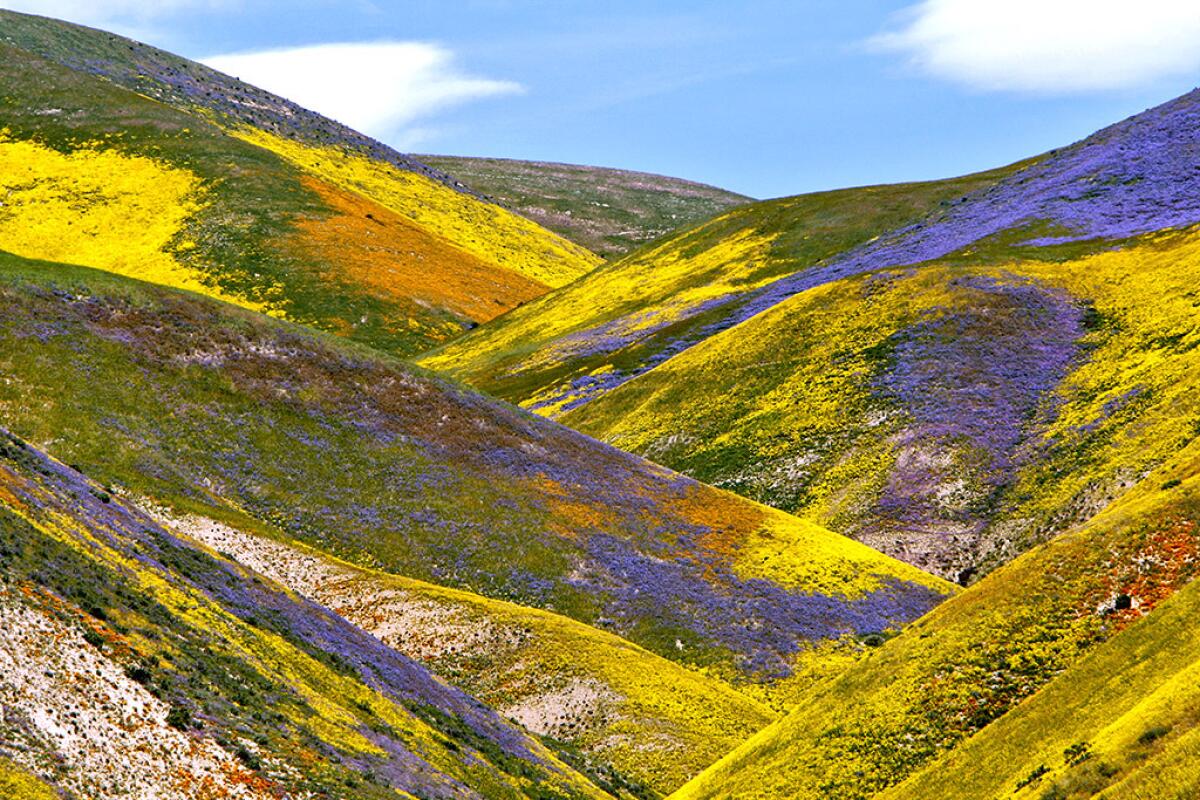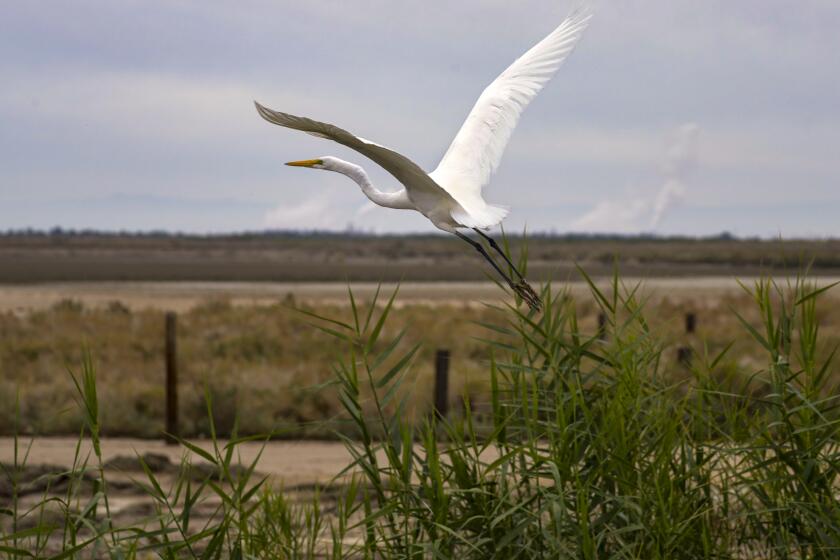Opinion: Your ‘superbloom’ selfie isn’t worth destroying California’s ecosystems

As a botanist, I feel joy and gratitude for the recent winter rains, on behalf of Southern California’s ecosystems; it is a time of renewal and recovery. However, the rains also bring a sense of dread about a potential “superbloom.” I do not dread the recovery of wildflower fields from severe drought, but I do worry about the endless masses of people in search of a blooming spectacle and the damage they’ll cause to these fragile ecosystems.
It’s still too early to tell whether there will be a superbloom, because it will depend on whether there’s more rain in the coming weeks. But some wildflowers are already putting on a show, and a widespread bloom is likely, due to the extraordinary precipitation we received in January. Regions in coastal Southern California have reached 87% to 126% of their total average precipitation for the “water year,” or the period from Oct. 1 to Sept. 30 when hydrologists measure precipitation totals.
Superblooms — in which a diversity and abundance of dormant wildflower seeds sprout and bloom prodigiously for a brief window — are rare and fragile, and many habitats that support them have already been lost to agriculture or development. Imagine Los Angeles with hillsides and valleys covered in carpets of color. Vibrant patches of orange poppy, the purple glow of phacelia and the radiant yellow of goldfields: wildflowers as far as the eye could see. A century ago, it was something to delight in each spring, but the splendor of Southern California wildflowers in the coastal basins is mostly a faded memory.
Reducing carbon emissions is not enough. The other challenge is to minimize harm from the fires and floods that can no longer be prevented.
In modern times, we must travel far from the urban centers to revel in the beauty of spring wildflowers. Given the right conditions, the superbloom lives on in protected lands like the Antelope Poppy Reserve, Anza Borrego State Park, Carrizo Plain and Joshua Tree National Park, but I fear the waves of hype about our fragile flower friends.
Thousands of people descended upon wildflower locations in 2019 in the hopes of experiencing the wonder of wildflowers. There were extensive reports of people walking off trail across fields of flowers, trampling as they went, picking flowers, digging up whole plants and trespassing in protected reserves. The wildflower season was even dubbed the “poppy apocalypse” by the news media. Some of this defacement has been documented by observers but, for the most part, I’ve seen it in shameless selfies on social media. People don’t seem to realize how destructive they’re being.
As I watch Californians enter a frenzy over wildflowers, I can’t help but think about ways in which we can harness this tangible enthusiasm for good. Can we steer this love of the spectacle to conserve these fragile species and ecosystems for future generations?
The attraction of the superbloom is not a new phenomenon. Wildflower tourism is well documented through historical photographic accounts and newspaper articles. The renowned plantsman Theodore Payne noted his vivid impressions of California when he arrived from his native England in 1893. He observed “the endless miles of wildflowers in the San Fernando, San Joaquin, and Antelope Valleys.” There is a photograph from 1907 that shows tourists picking wildflowers in poppy fields. It sounds so innocent, but when thousands of people do it, they take a toll on the species, interrupting the purpose of the superbloom: to procreate.
The recurring parade of color is a unique treasure to behold in California. A relatively high proportion — nearly a third — of plant species native to the state, such as our California poppy, are annual plants. Having only a single season to emerge from seed, grow, flower and produce seeds, they are inherently ephemeral and vulnerable to disturbance. So when you’re on wildflower excursions this year and in future years, remember a few key points.
California’s largest lake is shrinking. It can’t be refilled, but it can be saved.
Stay on trails, do not enter a wildflower field, and take only photos. If you have the time and resources, you can volunteer or donate to your favorite park or environmental nonprofit organization. It is important to take a step back and consider how we are interacting with nature. In order for us to stay connected, feel joy and reap the benefits of what the earth provides, we need to find ways to give back.
Although much has been lost, what remains is precious, fragile and irreplaceable. Will we let our beautiful wildflower fields be subject to the tragedy of people pursuing a selfie no matter the injury to nature? Or will Californians become stewards of our state’s fragile ecosystems?
Enjoy the glory of wildflowers in ways that ensure sustainability. As the botanist John Thomas Howell once said of the California poppy, “In its abundance, this colorful plant should not be slighted: Cherish it and be ever thankful that so rare a flower is common.”
Naomi Fraga is director of conservation programs at California Botanic Garden and a research assistant professor at Claremont Graduate University.
More to Read
A cure for the common opinion
Get thought-provoking perspectives with our weekly newsletter.
You may occasionally receive promotional content from the Los Angeles Times.











